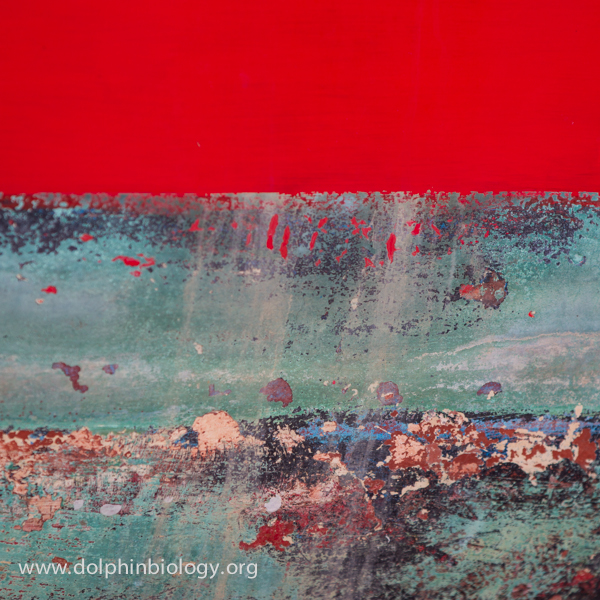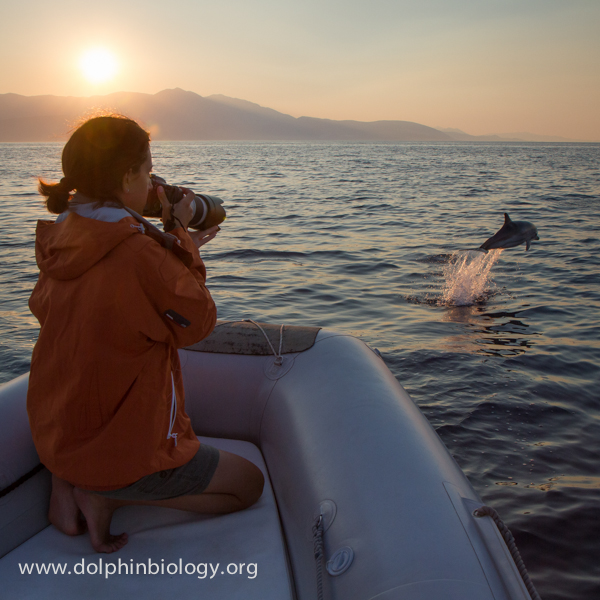31 August 2013
Fishing boat deserving protection
The impact on the marine ecosystem of this kind of beautiful artisanal fishing boats is negligible. These days, the fish one can hope to catch with a 4 or 5 m long wooden boat provides, at best, an occasional frugal meal to be consumed by the fisherman's family.
As the fish stocks declined due to overfishing by commercial fleets, the small traditional boats have themselves declined. Skilled artisans able to work with wood and repair them are rare, and fibreglass has become the standard.
Small wooden boats should be regarded as a part of Greece's (and other coutries') cultural heritage. Instead of subsidizing commercial fleets that cause devastation, Mediterranean policy makers should consider investing in the protection of small-scale fishermen who operate this kind of small and harmless boats. That would promote beauty, tradition and sustainability at once.
(Photo by S. Bonizzoni, Itea, Greece)
30 August 2013
29 August 2013
28 August 2013
Pleasure and pain, happiness and misery
This Photoshop-based ad is part of an awareness campaign by The Royal Society for the Prevention of Cruelty to Animals Queensland. It states that "we're all creatures great & small" (see the full ad by RSPCA - HERE).
In the Introduction of a paper published in 2010 (*) we wrote the following:
The full scientific realization that animals suffer is relatively new, and still lively debated (e.g. Singer, 1975; Regan, 1983; Hawkins, 2002; Chandroo et al., 2004; Dawkins, 2006, 2008; Bekoff, 2007). Although the concept has been at the core of some philosophies and religions for thousands of years (e.g. Buddhism; Lecso, 1988; Phelps, 2004), in strictly scientific terms the realization that animals can experience feelings including distress and pain has come much later in human history. Such a view has been around since the times of Charles Darwin and was clearly expressed by Darwin himself (1871): "the lower animals, like man, manifestly feel pleasure and pain, happiness and misery".
(*)
Bearzi G., Pierantonio N., Bonizzoni S., Notarbartolo di Sciara G., Demma M. 2010. Perception of a cetacean mass stranding in Italy: the emergence of compassion. Aquatic Conservation: Marine and Freshwater Ecosystems 20:644-654.
27 August 2013
26 August 2013
25 August 2013
"Hump-backed" striped dolphin
This striped dolphin with a hump – nicknamed Gibbo – has been regularly observed in the Gulf of Corinth since 2009. Yesterday Gibbo was actively socializing with other group members, performing repeated jumps around our boat.
Over the years, we have encountered bottlenose and striped dolphins with a range of physical deformities or other anomalies, who seem to be doing fine and behave pretty much the same way as their "normal" cospecifics. Anomalous appearance does not cut these animals off their society.
Also see THIS POST.
(Photo by S. Bonizzoni)
24 August 2013
23 August 2013
22 August 2013
21 August 2013
Black-headed gulls
Black-headed gulls (possibly Chroicocephalus ridibundus) on the beach of Galveston Island, Texas.
(Both photos by G. Bearzi, March 2012)
20 August 2013
19 August 2013
18 August 2013
Farmers market in Itea, Greece
We went shopping at the lively farmers market in Itea. Here is a PHOTO ALBUM showing the colours and some of the people.
(Photos by Dagmar Knäbel and Giovanni Bearzi)
17 August 2013
Dolphin Biology People: Dagmar
Dagmar Knäbel first came to Galaxidi in 2009 to volunteer in our dolphin project. She was happy with her experience and returned in the following year. In 2012 she started fundraising for OceanCare through a campaign of her own invention, "Pixels for Dolphins": Dagmar used the money made as a freelance digital photographer to support dolphin conservation. When OceanCare informed us about a mysterious German donor, we did not know it was her.
As we found out, and remembered the passion and committment that Dagmar displayed as a volunteer in the early years, we offered her to come to Greece as a field assistant. It turned out to be a good idea, because Dagmar helped with the cropping of thousands of dorsal fin images and got involved in field data collection and logistics. She also toured the streets of Galaxidi and took dozens of good photographs (some being posted on this Blog).
In her "normal" life, Dagmar is a mother and a secondary school teacher of Biology and Chemistry in Erfurt, Germany. She holds a M.Sc. in Environmental Biology at the University of Wales, Swansea.
(Photo by G. Bearzi, July 2013)
16 August 2013
15 August 2013
14 August 2013
Shearwater in the mirror
A Scopoli's shearwater Calonectris diomedea on a low-altitude flight.
Do these birds wonder who is the strange individual who always flies upside-down, just below? Or have they eventually realized it is their own reflected image?
Many aquatic species spend much of their time near a water surface that, when calm, accurately reflects their image (both from above and from below). Do they "recognize" themselves?
The question isn't as trivial as it may seem, because mirror self-recognition is sometimes associated with awareness of self - a cognitive ability previously thought to be exclusive to humans and apes, and now known to be present in dolphins.
E.g.:
Marino L, Reiss D, Gallup GG Jr (1994) Mirror self-recognition in bottlenose dolphins: implications for comparative investigations of highly dissimilar species. In: Parker ST, Mitchell RW, Boccia ML (eds) Self-awareness in animals and humans: developmental perspectives. Cambridge University Press, Cambridge, pp 380–391
Reiss D, Marino L (2001) Mirror self-recognition in the bottlenose dolphin: a case of cognitive convergence. Proc Natl A Sci USA 98(10):5937–5942
but also consider:
Schilhab TSS (2004) What mirror self-recognition in nonhumans can tell us about aspects of self. Biology and Phylosophy 19(1):111-126
13 August 2013
12 August 2013
11 August 2013
10 August 2013
Artisanal fisherman in Greece - 12
This fisherman seems to have descended from Mount Olympos to set his trammel nets.
(Photo by S. Bonizzoni, Itea, Greece)
09 August 2013
08 August 2013
Striped dolphin body language
A striped dolphin opens its mouth, possibly a warning sign to other group members.
While dolphins may not have a complex facial mimics (they can do little else than opening and closing their mouth), they certainly can express emotions and convey information about their "mood" by the way they move, occasionally also producing bubble streams via their blowhole.
And of course they possess a rich vocal repertory of pulsed and modulated sounds.
(Photo by G. Bearzi, Gulf of Corinth, Greece)
No more "successful" people
The plain fact is that the planet does not need more successful people. But it does desperately need more peacemakers, healers, restorers, storytellers, and lovers of every kind. It needs people who live well in their places. It needs people of moral courage willing to join the fight to make the world habitable and humane. And these qualities have little to do with success as we have defined it.
-- David W. Orr
From "Earth in Mind: On Education, Environment, and the Human Prospect", Island Press, Washington, 2004 (10th anniversary edition)
07 August 2013
Social, not conventional business
Today’s crisis is a man-made crisis, not a natural disaster like a tsunami. How did it come about? We’ve converted the financial market into a gambling casino. This market is now driven by greed and speculation, rather than by real production. This is what happens when you move away from a real economy to a speculative economy. (-- continues)
Quartet
Elena, Silvia, Isabelle and Dagmar on the inflatable. Elena and Isabelle attended a dolphin biology training course organized at our field station in partnership with OceanCare. Dagmar is a field assistant and a former volunteer.
(Photo by G. Bearzi, Gulf of Corinth, Greece, July 2013)
06 August 2013
05 August 2013
Mixed dolphins underwater
Striped dolphins Stenella coeruleoalba swim with short-beaked common dolphins Delphinus delphis and other individuals showing a somewhat intermediate pigmentation pattern.
(Photos from video by G. Bearzi, Gulf of Corinth, Greece)
04 August 2013
03 August 2013
Monk seal sighted from coast
On July 26th we casually stopped near a beach in Eretria, in the Southern Evoikos Gulf (Greece) and spotted a Mediterranean monk seal Monachus monachus that was swimming some 30-40 m off the coast.
The animal performed repeated dives around an anchored speedboat, while a few ladies were floating in nearby waters to escape the summer heat. The ladies did not notice, but a few people on the beach saw us taking photos, spotted the seal, and stood there to watch. There was no animosity or particular excitement, as if observing a Critically Endangered large marine mammal swimming among bathers was a normal occurrence.
Our observation lasted about 30 minutes, between 18:35 and 19:10. When we left the seal was still performing the same behaviour, i.e. surfacing quietly and diving around the same speedboat. Too bad we did not have our boat, or any means of obtaining closer photos. The ones above were taken from the beach with a 200 mm lens.
The sighting position is 38˚23'30''N 23˚47'09''E.
(Photos by G. Bearzi, July 2013)
02 August 2013
01 August 2013
Subscribe to:
Posts (Atom)












































